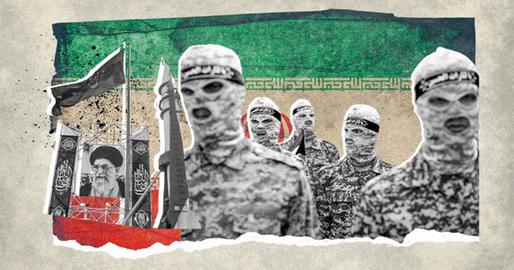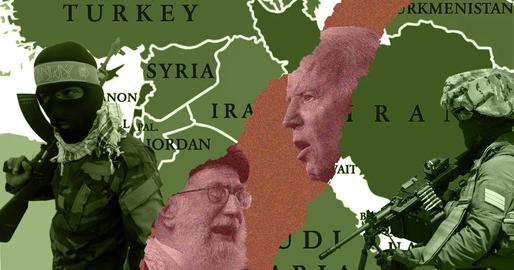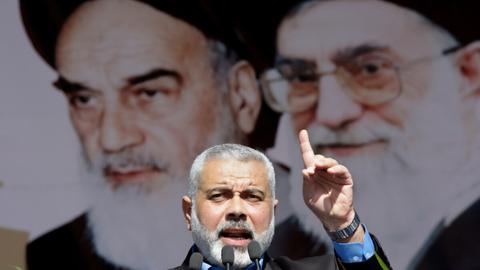Hate speech may start with words but it can end in more than just tears – it can end with violence and even death. IranWire's "Iran's Week in Hate Speech" series tracks Persian-language social media posts and articles targeting religious groups in Iran with derogatory language, conspiracy theories and calls for violence. Our tracking is not exhaustive: we focus on influencers and websites with large followings and wide reach. The series is designed to inform the general public and to help social media companies exercise their responsibility to monitor and remove hate speech on their channels.
IranWire tracked 56 instances of hate speech across social media over the past week and found that 49 of these were dedicated to broadcasting violent antisemitic language that attacked both Israel and Jews around the world.
Posts by social media influencers with thousands of followers, calling Jews “animals” and that “killing Jews” was the same as “killing animals,” and saying that the Jews who founded the state of Israel were “occupying animals” and “barbarians,” confirm that a surge in antisemitic hate speech and anti-Jewish conspiracy theories is flourishing in Persian just as much as in other languages.
Other examples of antisemitic content – which IranWire shares here on a limited basis, to provide evidence of the problem without amplifying their reach – includes republished material from Adolf Hitler’s writing on Jews as well as slurs against Israeli soldiers calling them “dogs” or other Jewish people “dirty Zionist rats.”
The 49 recorded instances of antisemitic comments, slogans and threats were posted by accounts followed by almost 500,000 users, IranWire’s tracking found. Together the reach of these posts would therefore extend beyond this core following.
The volume of this antisemitic language – 85 percent of the week’s total, compared to attacks on Baha’is and Sunni Muslims – also shows to what extent the situation in Gaza has dominated global attention. War is waged not just on the streets, or in the sky, but on our screens.
A few of the antisemitic posts monitored by IranWire included hashtags for “#gaza” and “#palestine,” as well as “#holocaste” [sic], confirming the link between the Gaza conflict and the rise in antisemitic material online.
And while IranWire began measuring weekly instances of hate speech after the October 7 attack by Hamas on Israel, a New York Times report published last week found that, according to the Anti-Defamation League, the platform X (formerly Twitter) had seen a 919 percent increase in antisemitic material since the October 7 attack. Meta’s Facebook had seen a 28 percent jump in the same period.
The examples tracked by IranWire are no doubt just a fraction of the total spewed out by Iran’s “cyber army.” Our new series, “Iran’s Week in Hate Speech,” is intended as a guide for social media executives and content moderators, encouraging urgent action in removing harmful disinformation, propaganda and hate speech from their platforms.
Guides such as this are even more critical when it becomes clear that key social media stakeholders are themselves accused of antisemitic views. Elon Musk was under fire yet again last week for repeating the antisemitic trope that Jewish communities push “hatred against Whites” – a comment that has provoked widespread rebuke.
The Iranian government, which supports and sponsors Hamas and has used the situation in Gaza as an opportunity to antagonize Israel and Western powers, seems to be playing its part in propagating antisemitic hate speech to stoke the conflict. IranWire has reported in the past on Iran’s “cyber army” of regime cheerleaders, hackers, and trolls, the latter of whom spew ceaseless quantities of disinformation and hate speech on social media platforms.
IranWire has also monitored specific posts that have more direct ties to the Iranian government or its organs. The X/Twitter account of Masaf Institute, a government body that spreads propaganda and hate speech under the supervision of Ali Akbar Raefipour, an official described by the Middle East Institute as an “anti-Semitic conspiracy theorist,” posted a video taken out of context that was designed to accuse the Azerbaijan and Türkiye presidents of sending fuel and food to Israel to support it in the current conflict.
The rest of IranWire’s monitoring of hate speech this week found that 13 other posts targeted Sunni Muslims and 10 posts targeted the Baha’i community.
Sunnis remain one of Iran’s most restive populations since the 2022 nationwide protests, provoked by the death of Mahsa Amini, with weekly protests and clashes still taking place in Zahedan, Sistine and Baluchistan, as well as in Iranian Kurdistan. And the Baha’is, Iran’s largest non-Muslim religious minority and, since the 1979 Islamic Revolution, the target of systematic persecution, have for decades been one of the Islamic Republic’s main scapegoats and propaganda targets.
visit the accountability section
In this section of Iran Wire, you can contact the officials and launch your campaign for various problems
























comments